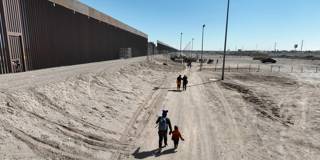While US leaders on both sides of the aisle focus on securing the country’s southern border, strategies tackling the root causes of immigration – from violence to inequality – remain nowhere to be found. Unless that changes, immigration pressures will remain a divisive political issue.
SAN JOSÉ – In a highly divisive presidential-election year, there is at least one point on which more than half of American voters agree: immigration is a top priority. Yet the discourse in the US Congress and on the presidential-campaign trail has so far ignored critical elements of the issue. With both Democratic and Republican leaders focusing primarily – if not exclusively – on how to improve management of the southern border of the United States, solutions targeting the drivers of immigration are nowhere to be found.

SAN JOSÉ – In a highly divisive presidential-election year, there is at least one point on which more than half of American voters agree: immigration is a top priority. Yet the discourse in the US Congress and on the presidential-campaign trail has so far ignored critical elements of the issue. With both Democratic and Republican leaders focusing primarily – if not exclusively – on how to improve management of the southern border of the United States, solutions targeting the drivers of immigration are nowhere to be found.